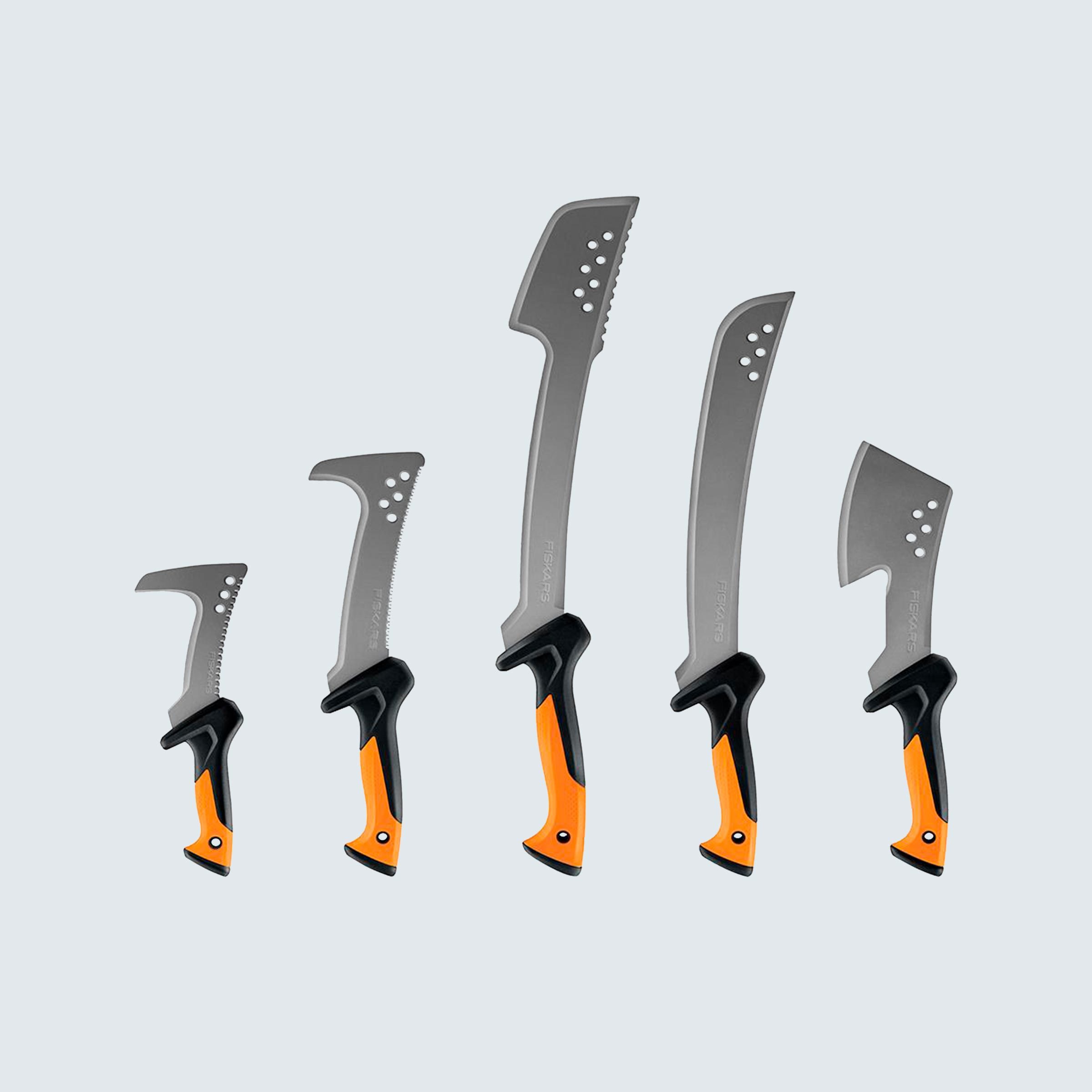
Clearing garden tools
These versatile garden tools are designed for trimming shoots and stems, cutting vines, severing roots, and sawing branches. If you’ve got an overgrown garden, or one filled with coarse ornamental grasses that need to be cut back, try a 13- or 18-in. billhook saw. Both feature a rust-resistant curved blade for quick pull cuts and a coarse saw edge for removing tough branches and grasses. Check out some of the most beautiful gardens in America.
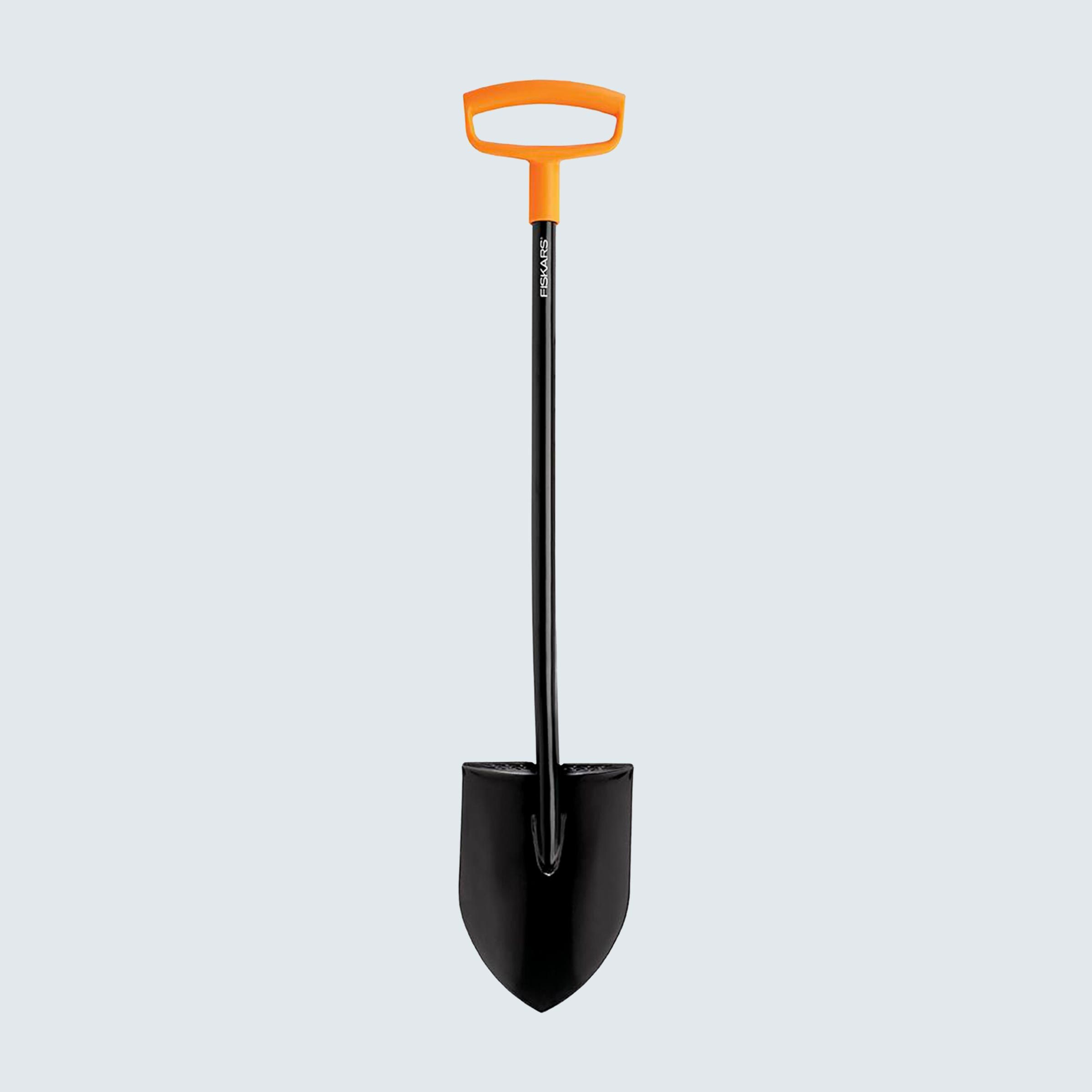
Digging shovel
A sharp, rounded-blade digging shovel is indispensable if you’re planting anything larger than your fist. Shovels have come a long way ergonomically, and this one is a good example. The D-shaped handle helps give you two-handed control when digging up and tossing heavy loads of soil. The welded steel construction is more durable than wood and won’t flex under a heavy load as fiberglass would. Meanwhile, the large step plate is wide enough to relieve pressure on your foot when stepping on it repeatedly. Here are ten expert gardening tips for beginners.
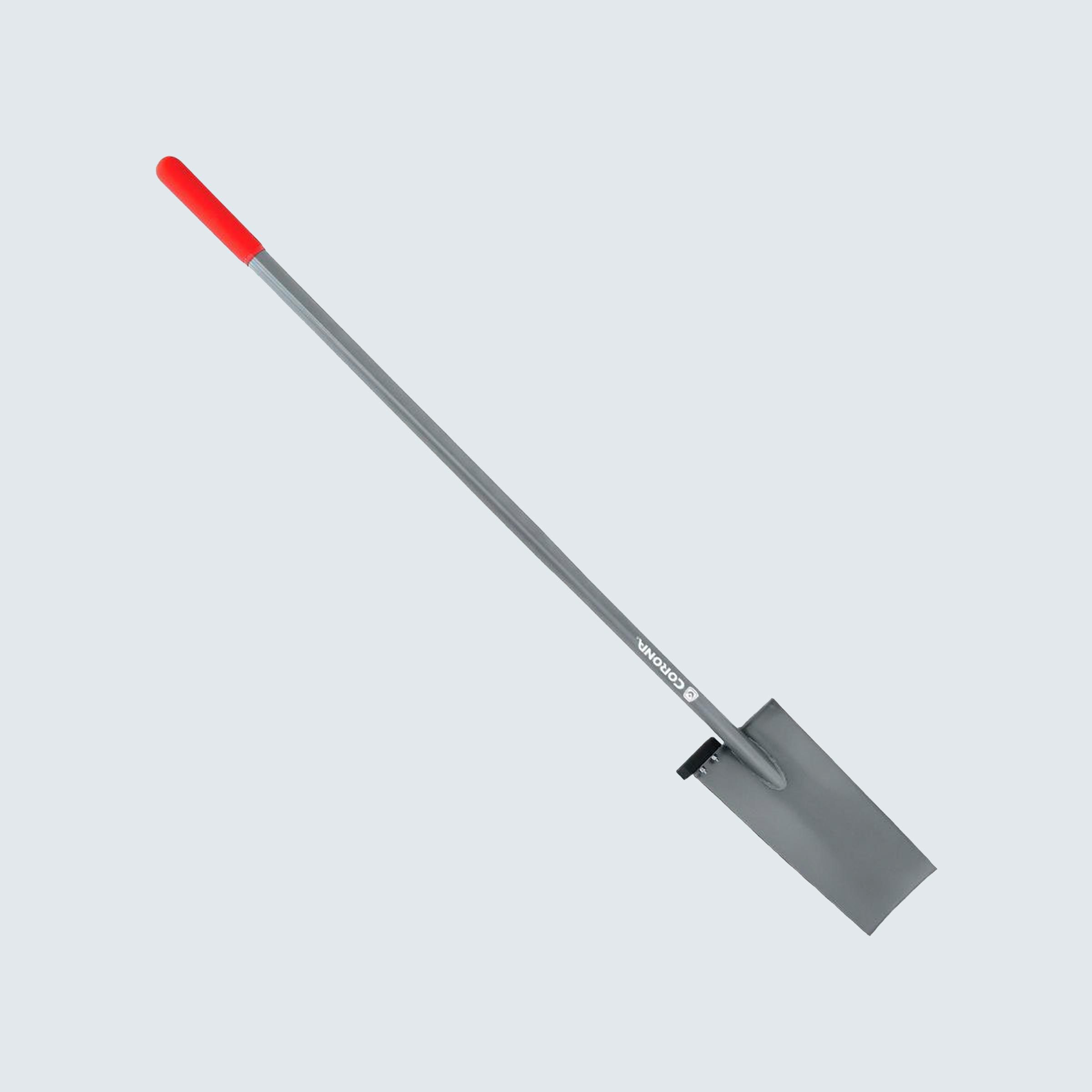
Edging spade
A flat-blade edging spade is a handy friend to have around the garden. It can edge a garden, slice turf neatly, cut roots, or scrape soil or mulch off a flat surface like a sidewalk or truck bed. You can also use this garden tool for general planting or when you’re “heeling in” bare-root plants (putting them in the ground temporarily until a permanent location is found). Like the digging shovel, the D-handle of this garden tool design offers better control. The rubber foot pad reduces fatigue and shoe damage and can fit on either side of the shovel with pre-drilled holes.
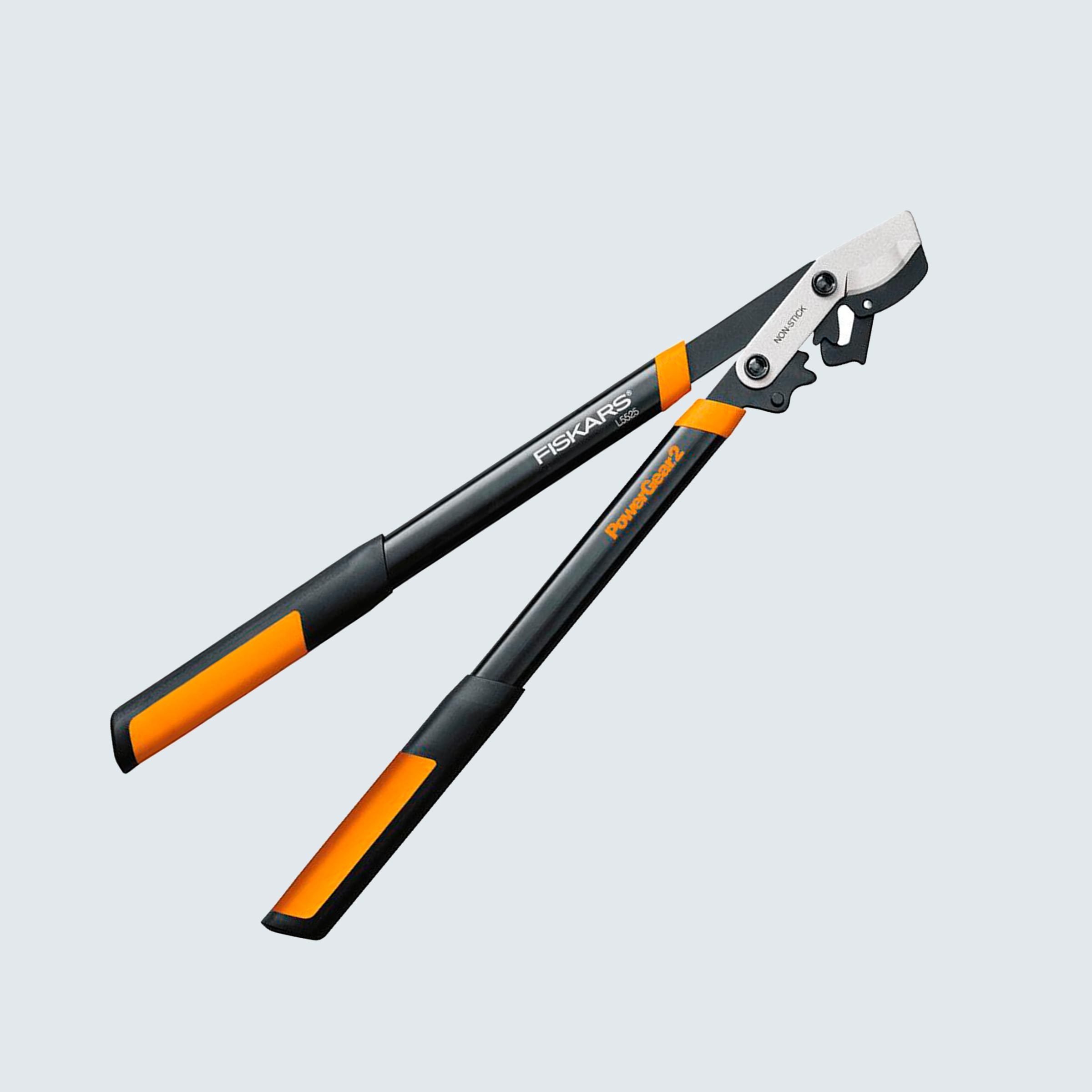
Loppers
When you’re cutting branches the size of your finger or bigger, bring out the loppers, which offer larger blades than pruners and more leverage as well. These PowerGear loppers can easily cut branches with a diameter of up to 1 1/2 in. The gear technology increases leverage to give you up to three times more cutting power than standard loppers. They’re available in various sizes, from 18 to 25 in.
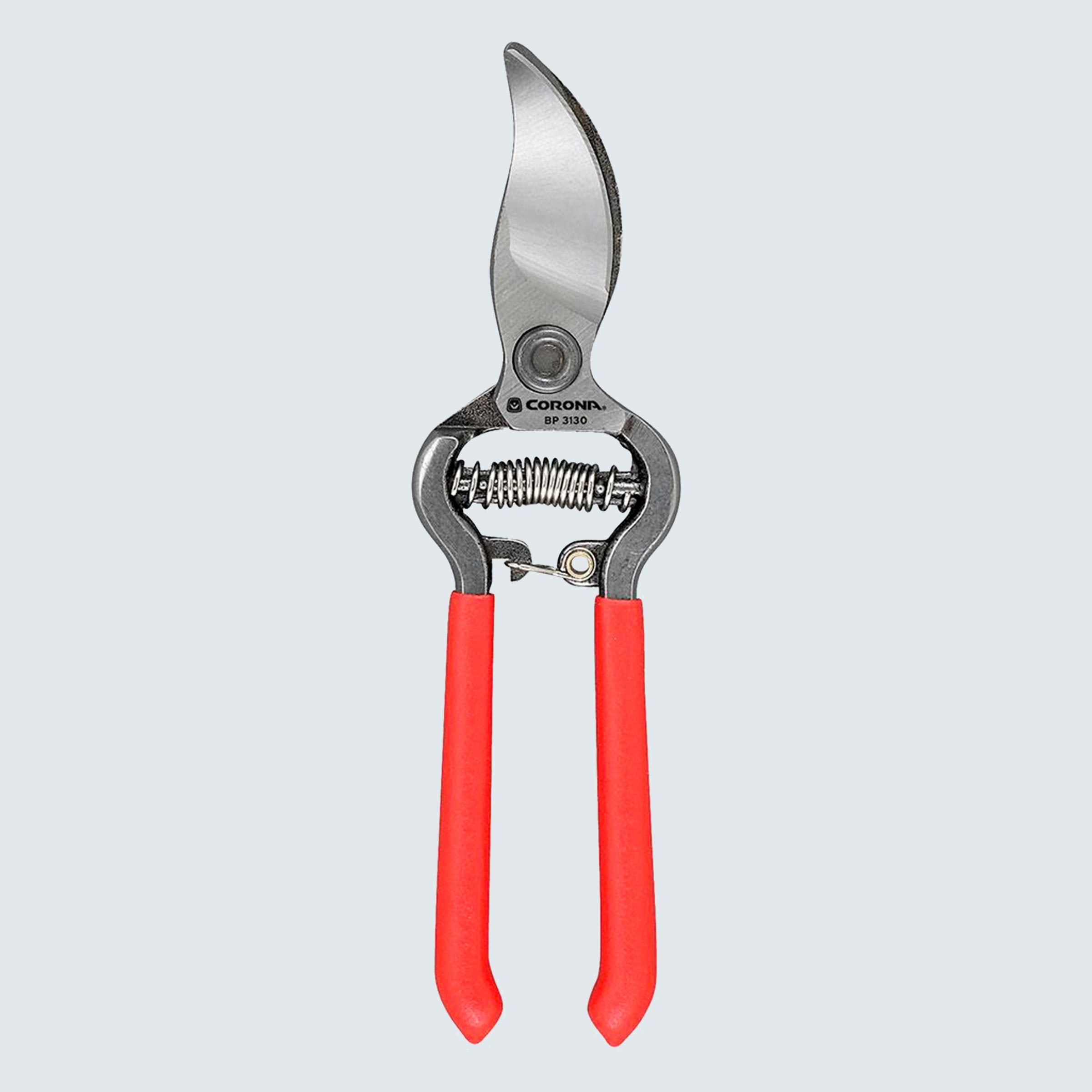
Pruners
Pruners are the go-to garden tool when you’re deadheading flowers or cutting pliable stems or small woody twigs. Bypass pruners (shown) are a good general-purpose garden tool for trimming stems of up to about 1/2 in. Ratchet pruners multiply the ratchet action to cut up to 3/4-in. stems. Any bigger and you risk breaking the pruners. Make sure you know these little mistakes that make your lawn look messy.
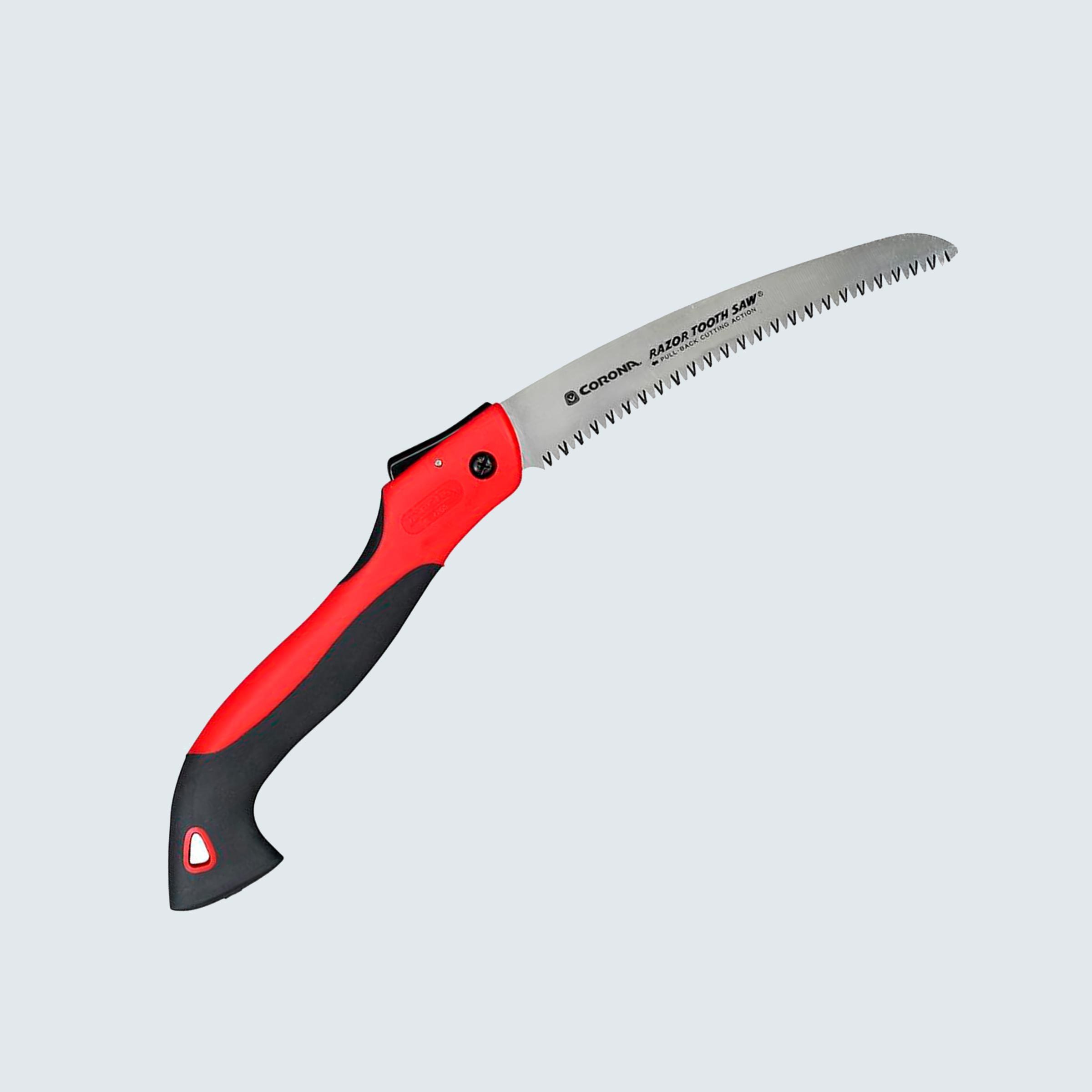
Pruning saw
Pruning saws are a good all-purpose saw for the garden. Many fold up for safe transport and storage. And all are more adept at working in tight spaces than the larger and more cumbersome bow saws. The razor-tooth blade easily cuts through woody stems the size of an arm. This is how to get rid of pesky garden pests.
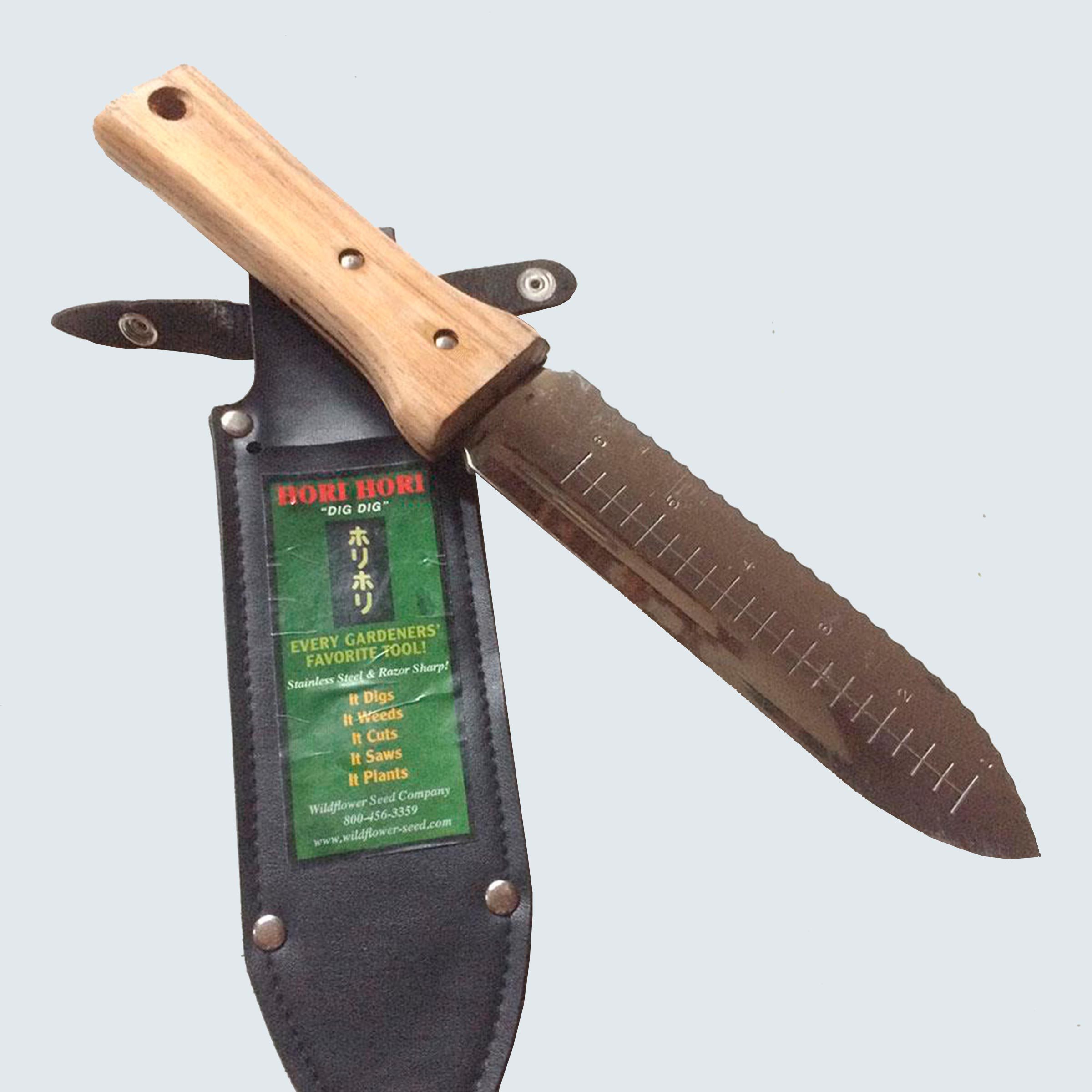
Hori Hori digging tool
This multipurpose garden tool is more than a trowel. It’s also a knife, a saw, and even a measuring device for planting bulbs. Use it for planting, weeding, cutting sod, severing roots, and dividing perennials. It even comes with a holster to protect the stainless steel blade.
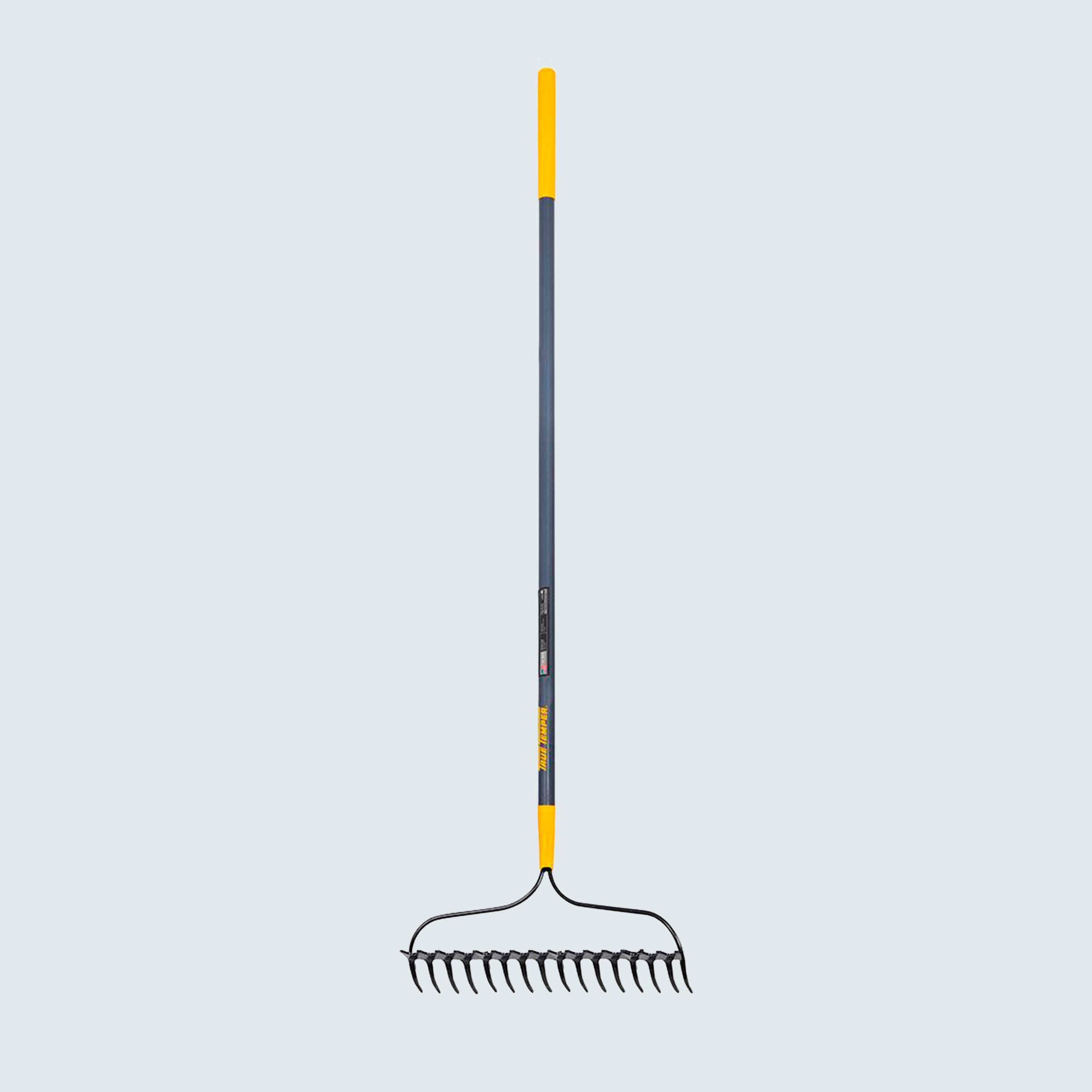
Garden rake
A garden rake usually gets its workout in the spring when you’re cultivating and prepping the soil in your vegetable garden. But it excels at other tasks, too, such as leveling mulch, scratching hard-packed soil to make it more porous, or leveling soil before seeding a lawn. You can even use it to remove thatch or moss from your lawn. Have furry friends who love to dig up your garden (or eat it up?) Check out these tips on how to keep dog and cats out of your garden.
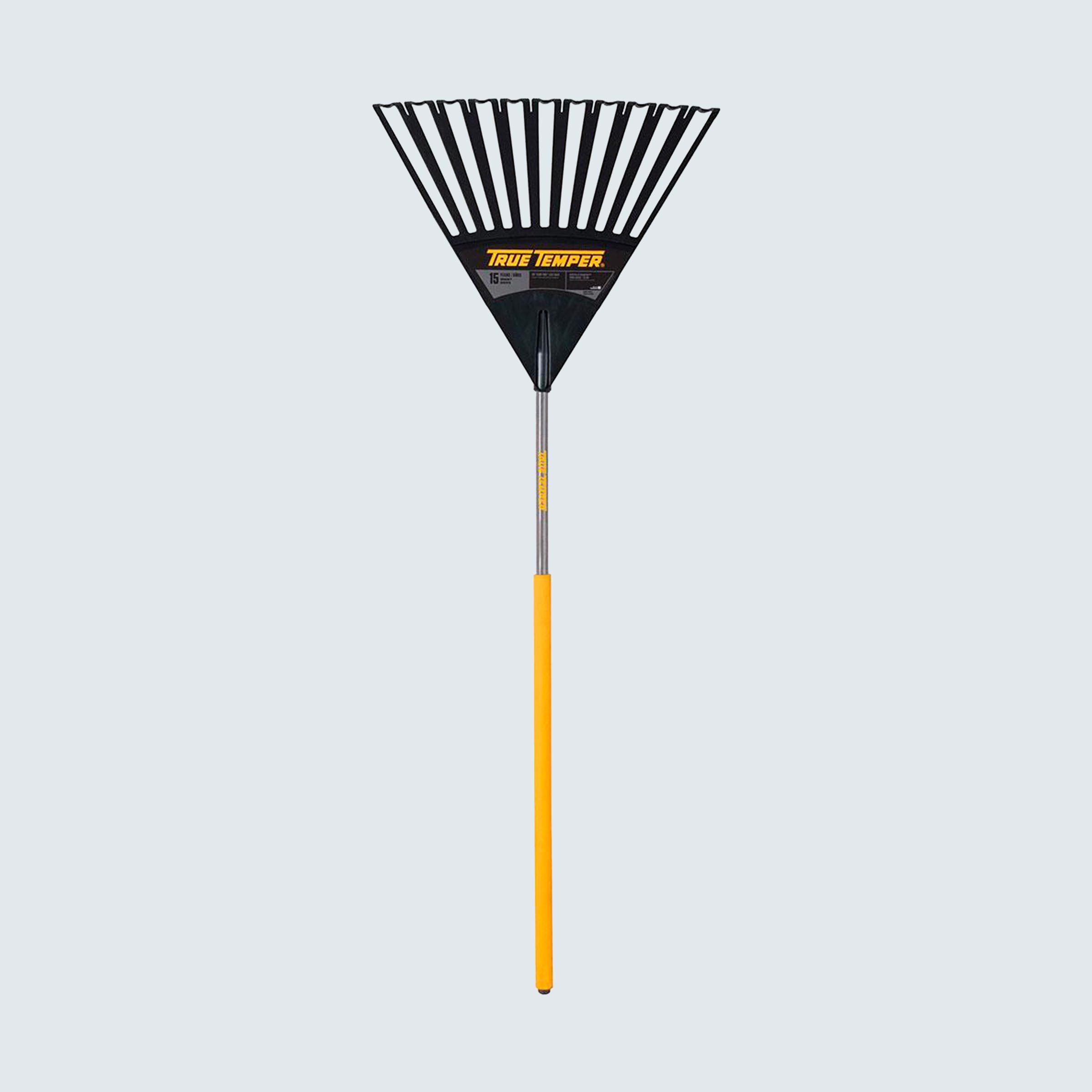
Leaf rake
While its primary purpose is gathering leaves, a leaf rake is also handy for collecting other garden debris (like grass clippings that accumulate when you’ve waited too long between cuts!). Durable steel-tine rakes are great for smaller yards or when you want to scratch the soil surface while raking. If you’re dealing with a large yard, a poly leaf rake covers more territory in less time. This poly garden equipment rake features a 24-in. clog-free head that won’t spear leaves. Here are 17 of the most common lawn mysteries, explained.
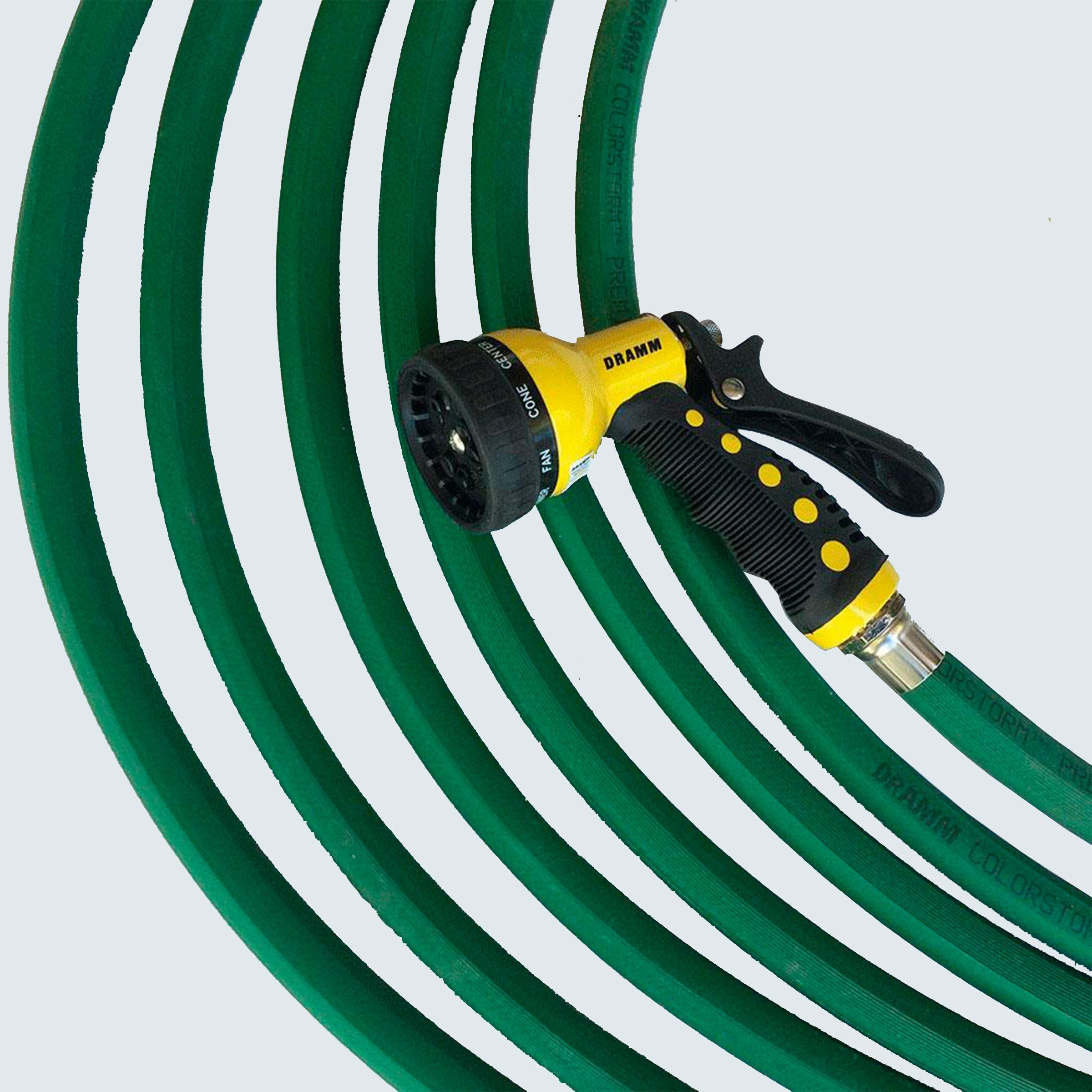
Hose and sprayer
There’s simply nothing more convenient than a hose for watering. Garden tools and hoses come in a variety of materials (vinyl, rubber), lengths (usually 25, 50, 75 feet), and even colors (traditionally green or black, now a rainbow of choices). This heavy-duty rubber hose will hold up for years, especially if stored under cover in cold climates. Although you can always rely on your thumb, the spray attachment gives you more options (for instance, a soft stream of water for watering newly seeded areas or a hard blast for cleaning mud off of tools). Here are 16 ways to kill garden weeds.
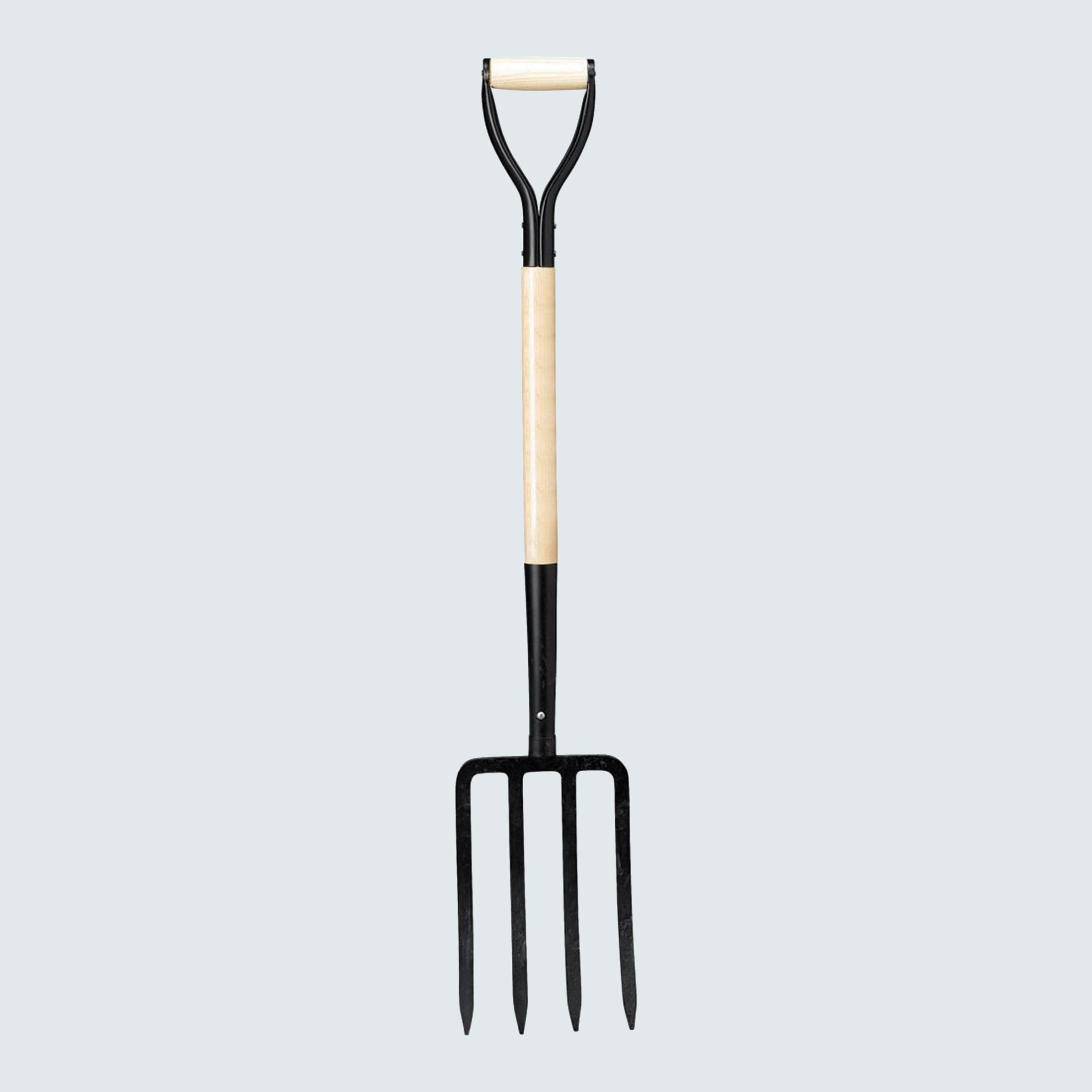
Digging fork
A digging fork, sometimes called a garden or spade fork, is handy for loosening compacted soil, aerating small areas, incorporating compost into garden beds, and dividing perennials. The D-handle makes the digging fork easier to use in tight spaces, while the tapered tines penetrate the soil more easily.
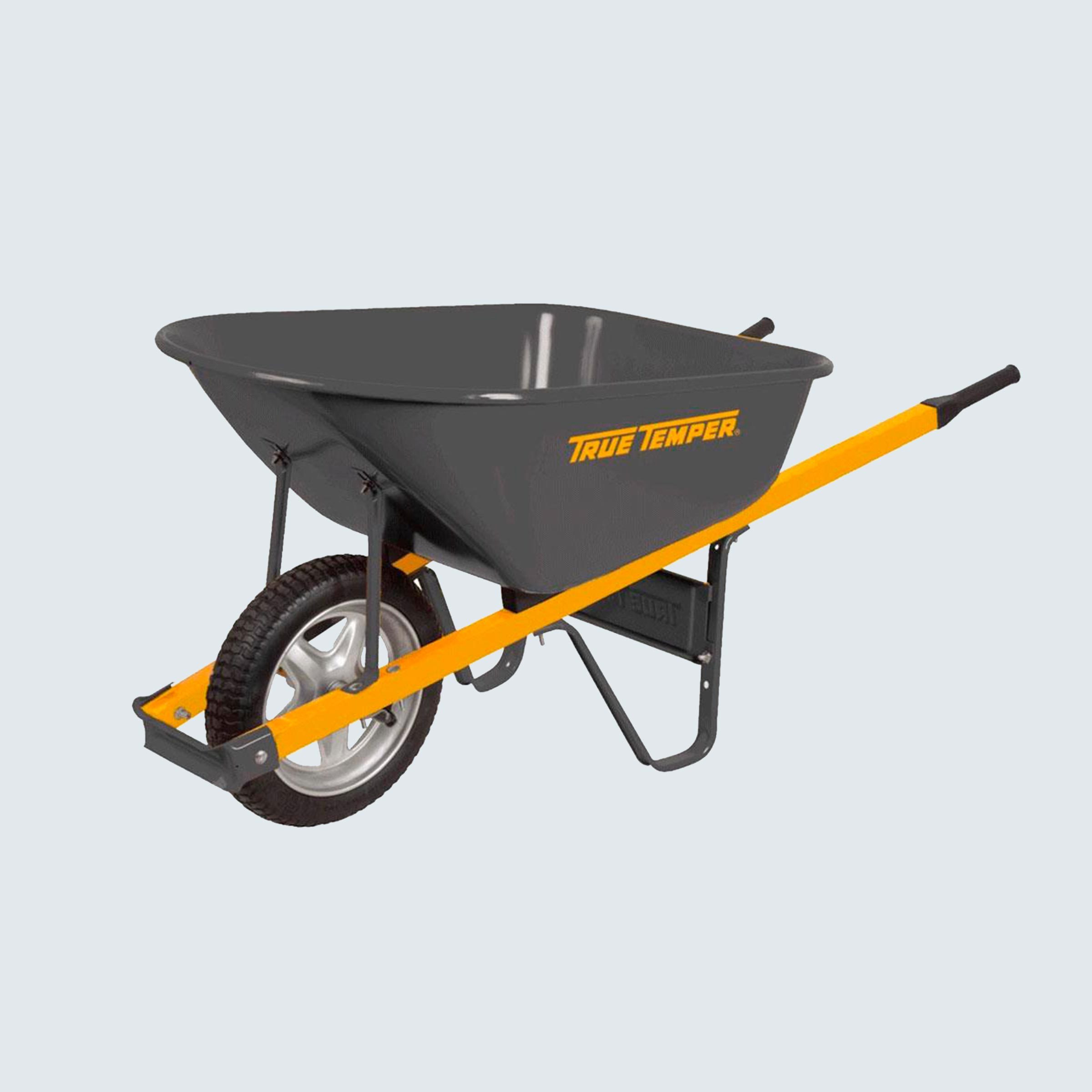
Wheelbarrow
There’s nothing like a wheelbarrow for making things easier for the gardener. You can carry soil, compost, firewood, and more. Or use it to transport your tools around the yard or soak plant roots before planting. If you’re working with heavy loads, get a steel bin rather than poly. Two-wheel models are the most stable for heavy loads. A standard wheelbarrow is appropriate for most uses, but do yourself a favor and get a never-flat tire. Now, read up on the best container garden ideas that will inspire you to make your own.